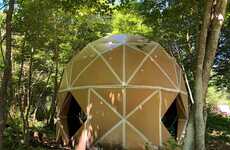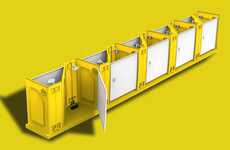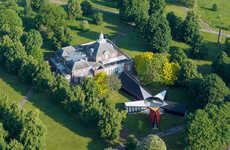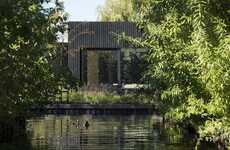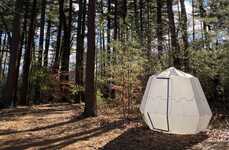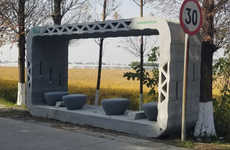
This Temporary Shelter Features Three Stacked Prefabricated Blocks
Rahul Kalvapalle — August 26, 2016 — Art & Design
References: kokoon.squarespace & woodprogram.fi
A group of design students working out of the Wood Program Studio over at the Aalto University School of Arts, Design and Architecture in Finland have come up with an alternative temporary shelter design that aims to cater to everyone from homeless people to asylum seekers and even broke students.
This temporary shelter, dubbed Kokoon, features a trio of prefabricated sections that are secured in place using sealant, with the entire assembly process taking only a single day. Despite its compactness and the fact that it takes up very little room, the temporary shelter offers a bedroom, bathroom, kitchen and dining area spread out over its three floors.
The Kokoon project is a great example of space-saving shelter architecture that could be used to help people in need.
This temporary shelter, dubbed Kokoon, features a trio of prefabricated sections that are secured in place using sealant, with the entire assembly process taking only a single day. Despite its compactness and the fact that it takes up very little room, the temporary shelter offers a bedroom, bathroom, kitchen and dining area spread out over its three floors.
The Kokoon project is a great example of space-saving shelter architecture that could be used to help people in need.
Trend Themes
1. Modular Shelter Designs - Designing and building compact and modular shelters that are flexible, easy and quick to assemble and provide self-contained living spaces for multiple users.
2. Prefabrication Technology - Innovative prefabrication technology that allows for simple and low-cost construction for temporary and permanent buildings.
3. Sustainable and Affordable Housing - Developing affordable and sustainable housing models that can be quickly deployed to meet the needs of marginalized populations.
Industry Implications
1. Construction - Implementing modular construction techniques and latest prefabrication technologies to build affordable housing and shelters.
2. Architecture and Design - Designing and developing compact and sustainable housing that meets the needs of marginalized communities and individuals with limited resources.
3. Social Services - Providing support to marginalized populations through the development and deployment of temporary and long-term housing solutions that provide safety, security and self-reliance.
4.1
Score
Popularity
Activity
Freshness


